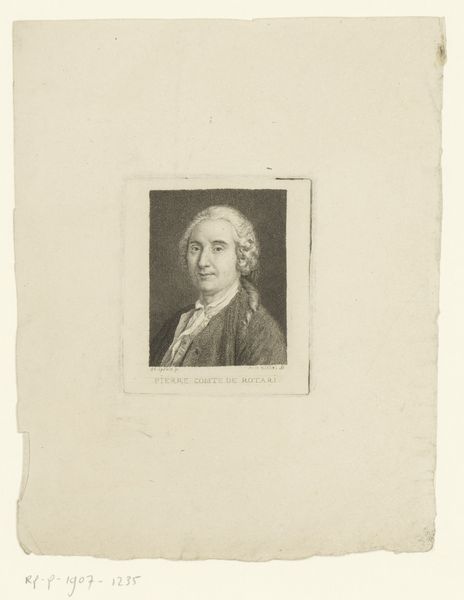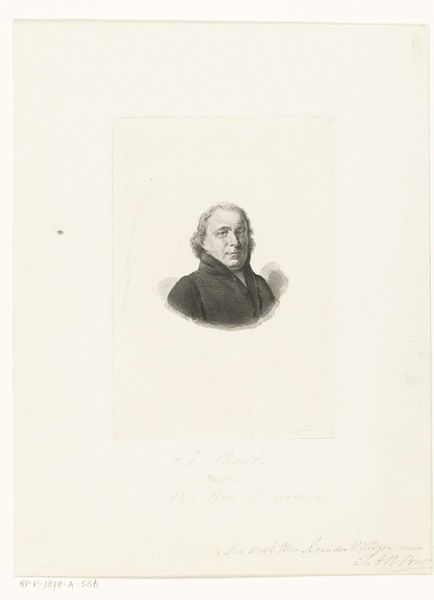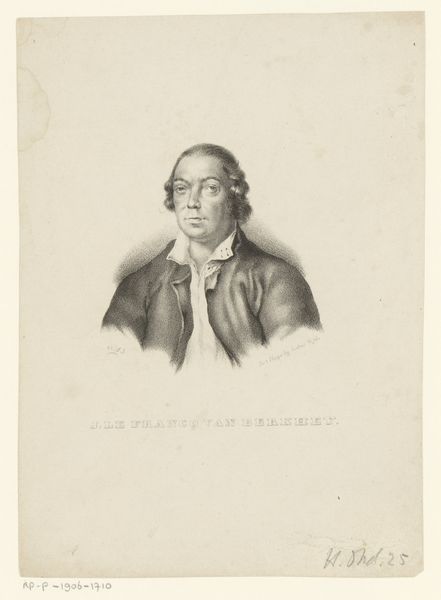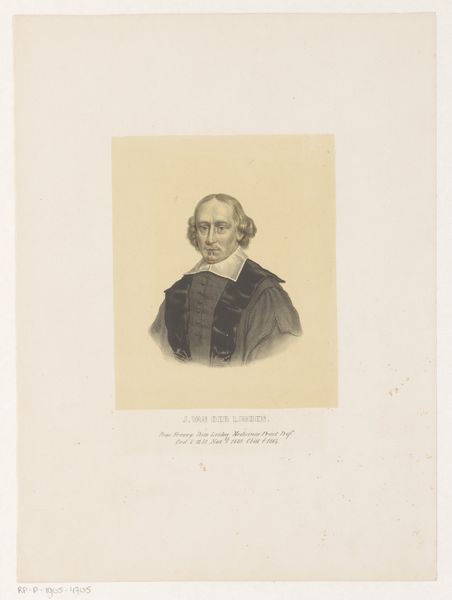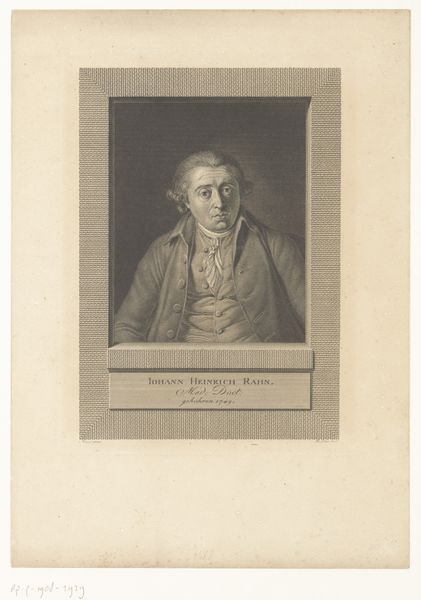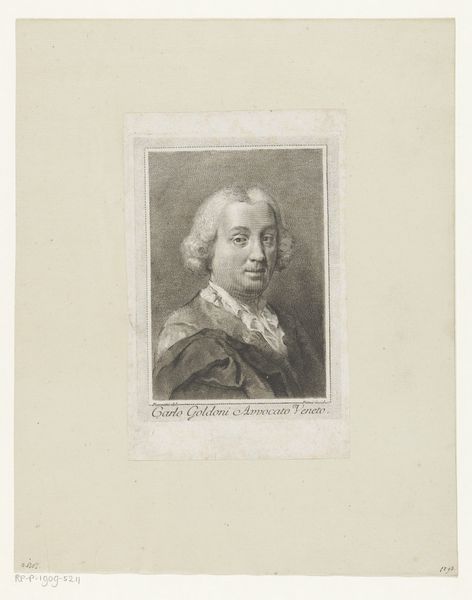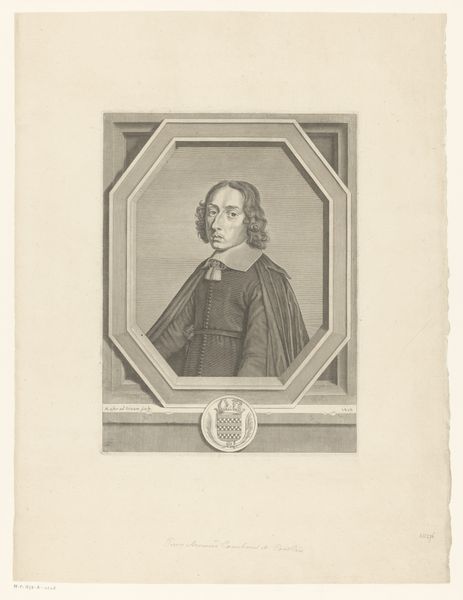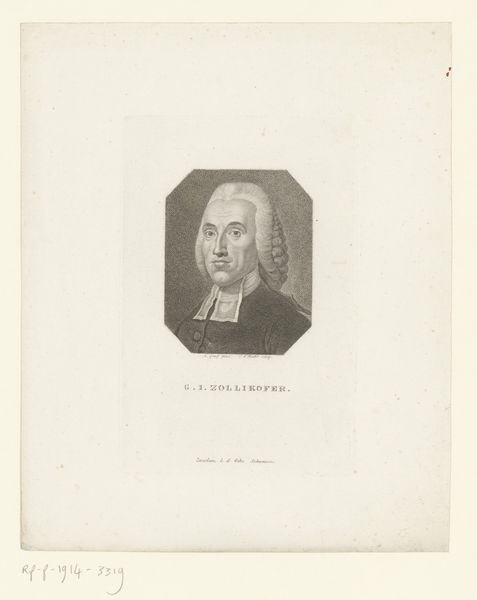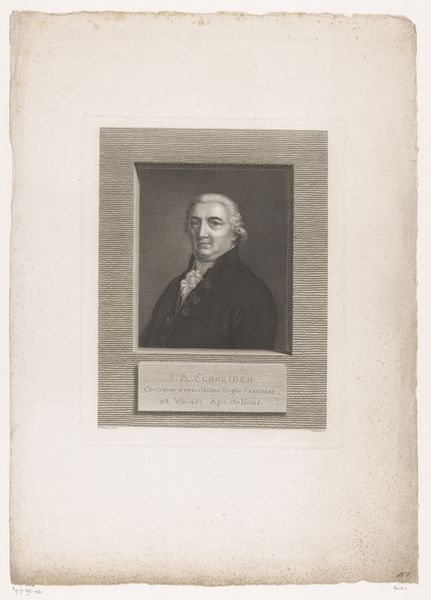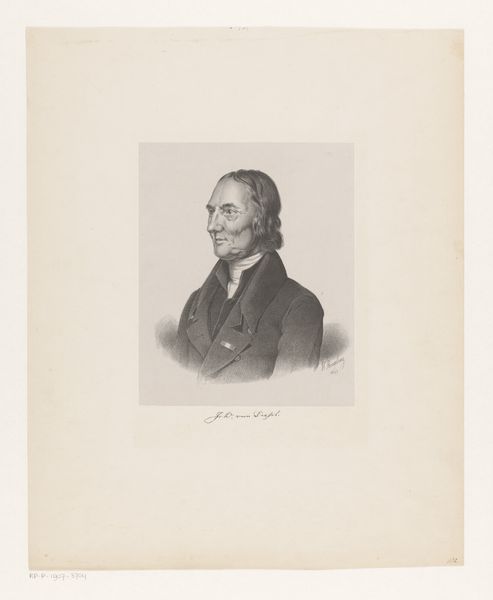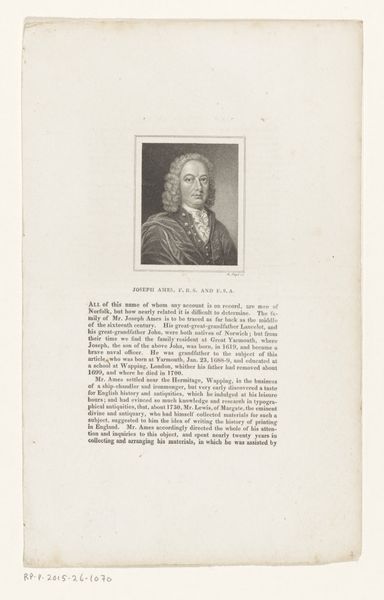
engraving
#
portrait
#
neoclacissism
#
engraving
Dimensions: height 255 mm, width 201 mm
Copyright: Rijks Museum: Open Domain
This is Lazarus Gottlieb Sichling’s portrait of Johann Gottfried Herder. It’s made with an engraving process: the artist would have used a tool called a burin to manually cut lines into a metal plate, and then used this to print multiple impressions of the image. Engraving like this has a long and fascinating history, dating back to the 15th century, and is closely associated with printmaking. It involves a lot of intense labor and craft skills to make the detailed lines that define the contours of Herder's face and clothing. The texture and tonal variations you see are entirely dependent on Sichling’s skilled manipulation of the burin to create minute gradations. Although it seems like a very different world from our own, the printmaking trades were actually the mass media of their day. Engravings were made in multiples, using a labor-intensive process which guaranteed uniformity. So, looking at this image, we have to appreciate the immense amount of work that went into its production, and how this influenced its appearance. This helps us to question traditional divisions between art and craft, highlighting the material processes at play.
Comments
No comments
Be the first to comment and join the conversation on the ultimate creative platform.
